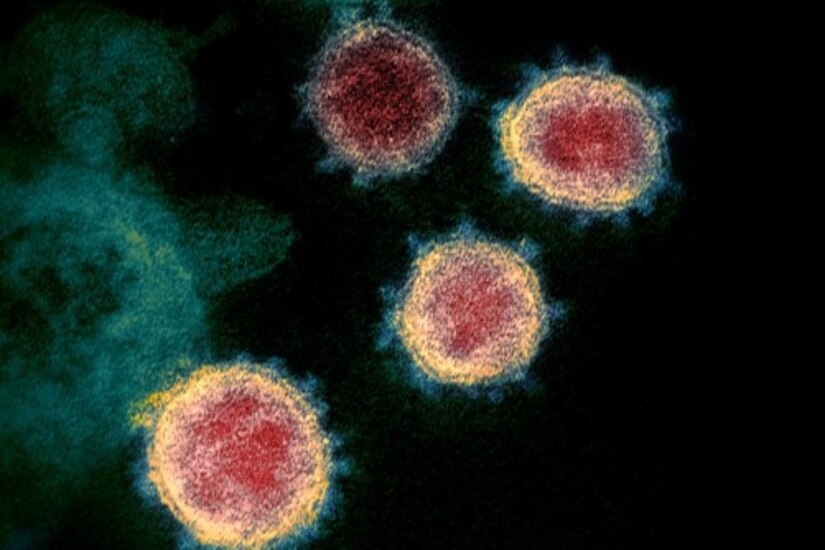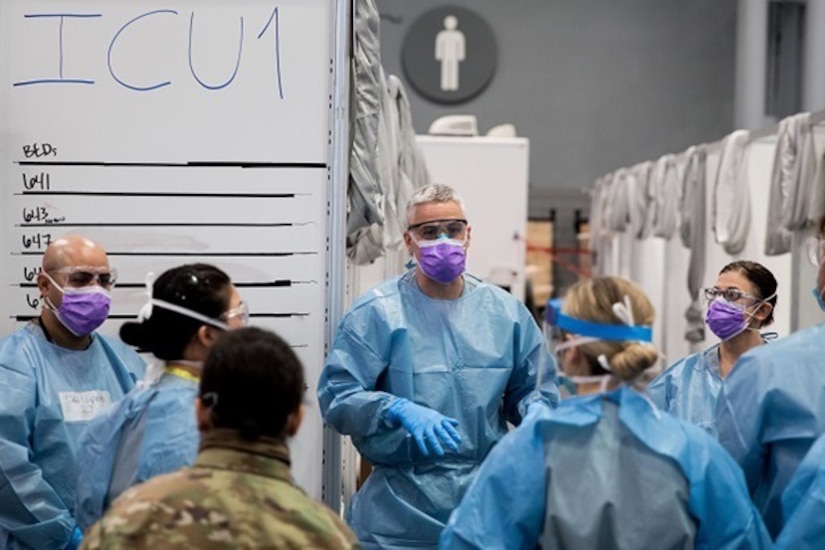Dec. 31, 2020 |
Researchers at the Uniformed Services University of the Health Sciences recently identified pint-sized antibodies, or "nanobodies," that could protect against COVID-19. At least one of these nanobodies — produced by a llama named Cormac — also appears to work well in either liquid or aerosol form, suggesting it could also help protect a person's lungs from infections.

The study was led by Dr. David Brody, director of USU's Center for Neuroscience and Regenerative Medicine, along with Thomas J. "T.J." Esparza, a Henry M. Jackson Foundation for the Advancement of Military Medicine employee working in support of CNRM. Both Esparza and Brody also work in the National Institutes of Health's National Institute of Neurological Disorders and Stroke .
Nanobodies are a type of antibody naturally produced by the immune systems of camelids, such as camels, alpacas and llamas. These proteins are about a tenth of the weight of most human antibodies on average. They can be isolated in the lab and essentially free-floating versions of the tips of the arms of heavy chain proteins, which form the backbone of a typical Y-shaped human immunoglobulin antibody found in the blood. These tips recognize proteins on viruses, bacteria and other invaders, also known as antigens. Therefore, they play a vital role in the immune system's defenses.
Nanobodies are also more stable, less expensive to produce and easier to engineer than typical antibodies. Therefore, they have been increasingly used for medical research. A few years ago, for example, scientists showed humanized nanobodies may be more effective at treating an autoimmune form of thrombotic thrombocytopenic purpura, a rare blood disorder, than current treatments.
Since the pandemic broke, several researchers have produced llama nanobodies against the SARS-CoV-2 spike protein, which is believed to be effective at preventing infections. In this study, published in Scientific Reports, the researchers used a slightly different strategy to find nanobodies that may work especially well.

"For years, TJ and I had been testing out how to use nanobodies to improve brain imaging. When the pandemic broke, we thought this was a once in a lifetime, all-hands-on-deck situation and joined the fight," Brody, the senior author of the study, said. "We hope that these anti-COVID-19 nanobodies may be highly effective and versatile in combating the coronavirus pandemic."
The researchers found that at least one of these nanobodies, called NIH-CoVnb-112, may be highly effective at preventing infections or detecting virus particles by grabbing hold of SARS-CoV-2 spike proteins. These "spike proteins" act like a key by "opening the door to infections" when they bind to a protein found on the surface of certain cells, called the angiotensin converting enzyme 2 receptor, the researchers explained. They then found a way to isolate these nanobodies that block infections by covering the "teeth" of the spike protein, which bind to and unlock the ACE2 receptor. This was done by immunizing the llama, Cormac, five times over the course of 28 days with a purified version of the SARS-CoV-2 spike protein.
After testing hundreds of nanobodies, they found Cormac produced 13 nanobodies that could potentially be strong candidates, including one they refer to as NIH-CoVnB-112. The researchers then showed that the NIH-COVnB-112 nanobody could be effective at preventing infections.
To mimic the COVID-19 virus, the researchers genetically mutated a harmless 'pseudovirus' so that it could use the SARS-CoV-2 spike protein to infect cells that produce human ACE2 receptors. The researchers saw that relatively low levels of the NIH-CoVnb-112 nanobodies prevented the pseudovirus from infecting these cells in petri dishes.

Additionally, the researchers showed that the nanobody was just as effective in preventing the infections in petri dishes when it was sprayed through a nebulizer, or inhaler, often used to help treat patients with asthma.
"One of the exciting things about nanobodies is that, unlike most regular antibodies, they can be aerosolized and inhaled to coat the lungs and airways," Brody said. "This is promising in that it could potentially be used to protect the lungs from infections."
This study was supported by NIH Intramural Research Programs at the National Institute of Neurological Disorders and Stroke and National Institute of Environmental Health Sciences.






No comments:
Post a Comment